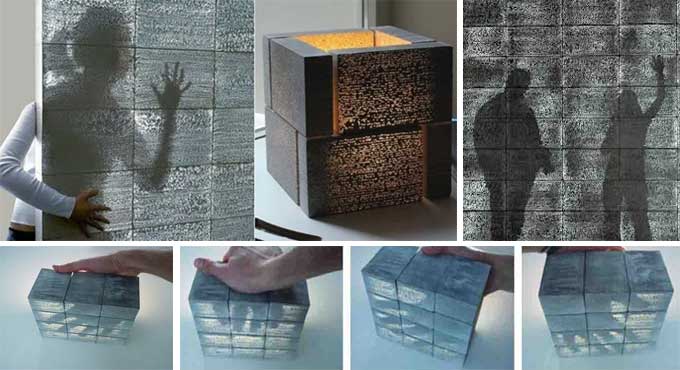
Everything you need to know about the Transparent Concrete

We now live in a society where environmental issues and energy usage have reached an all-time high. Skyscrapers are being built too quickly in today's emerging nations, where a lack of land has resulted in a reduction in their distance from one another.
Therefore, less natural light enters buildings the closer they are built. Because of this, these structures require artificial lighting, which uses a significant amount of energy.
If you are in search of energy-efficient materials to build a structure what can be a better option than transparent concrete? Such issues may be partially resolved by translucent concrete or light-transmitting concrete because these materials primarily focus on transparency and have aesthetic and environmentally friendly applications.
Transparent Concrete
Due to the incorporated light optical components, often optical fibers, transparent concrete is a concrete-based construction material having light-Transmissive qualities. The stone transmits light from one end to the other. The fibers must thus penetrate the entire thing.
Due to its characteristics, transparent concrete is sometimes referred to as translucent concrete and light-transmitting concrete. It is a decorative material that is used to clothe internal walls in great architecture.
This concrete will serve an architectural purpose for a good aesthetical view of the building and it will also serve as a light source for reducing the power consumption of illumination.
Application of Transparent concrete
Below are a few uses of Transparent concrete:
Here are a few properties of polymer Concrete:-
1. Transparent concrete coatings provide your home's building with an imaginative lighting fixture.
2. It has the ability to transmit light, and because of this, whether natural or artificial, it may be employed as a construction component that conserves energy.
3. Since it can accommodate interior natural light, it may be applicable to areas without power.
4. A building or home's architectural and aesthetic appeal is enhanced by the use of translucent concrete.
5. Transparent concrete is used to brighten walkways at night and boost visibility at dark subway stations.
Materials used in Transparent Concrete
Sand materials: Sand used in transparent concrete is comparatively finer than that used in normal concrete because transparent concrete is made of fine materials.
Cement materials: Concrete contains a substantial amount of cement, however since an optical fiber transmits light in concrete, a special cement is not required. We can use regular cement, just like we would for regular concrete.
Optical fibers: Optical fibers are flexible materials with a little greater thickness than a human hair that are constructed of silica or plastic. Fiber optic is another name for it.
The fiber optic's operating principle is complete internal reflection. By using optical fibers, light can travel through the concrete from one side to the other, giving it its transparency.
The manufacture of transparent concrete
The same processes used to create regular concrete are also used to create translucent concrete. It is created by incorporating optical fiber with thin concrete. Because optical fibers can only convey light when both ends are open, they should be installed so that both of them emerge from the concrete.
Light cannot pass from one side of concrete to the other if one end of a fiber is blocked or covered by cement slurry. Therefore, in order to cast and embed optical fiber in concrete, we must construct a particular mold.
During the casting process, it is included by placing thousands of fiber optic pieces in a straight line at each step of the process. This type of concrete is almost as strong as normal concrete in terms of compressive strength and it also offers the benefit of being lightweight.
Merits of transparent concrete
1. On large-scale objects, this transparent concrete offers a great advantage because the texture remains visible even when the object is large, while on finer translucent concrete objects, the texture is indistinct when viewed from a distance.
2. The fact that the transparent concrete is capable of transmitting light means that with the help of solid walls, a home is able to use fewer lights during the daytime, meaning that they are able to conserve energy.
To learn more, watch the following video tutorial.
Video Source: Anime_Edu - Civil Engineering Videos
3. The use of transparent concrete can be beneficial in those situations where light is not able to enter the building properly.
4. Through the use of transparent concrete in buildings, it is possible to reduce the amount of energy used in them.
5. Light-transmitting properties allow it to reduce energy consumption, making it completely eco-friendly.
Wrapping it
Transparent concrete is effective in guiding light, and optical fiber volume in relation to concrete corresponds to transmission. In comparison to conventional concrete, translucent concrete maintains the same level of strength, and it also offers important aesthetic qualities.
It may be utilized to give the building its greatest architectural appearance. Used in areas where light cannot be directed with sufficient intensity.


